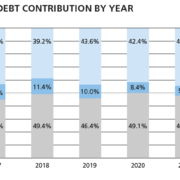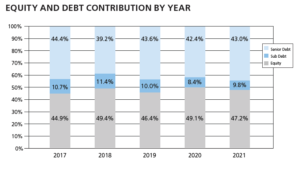From 60 days to 6 months: Why you need an M&A attorney
We had a signed letter of intent in April and were set to close the transaction in June – until the seller’s lawyer got in the way. What should have taken 60 days ballooned into a full six months. Luckily, it still closed.
Why you need an M&A attorney
When selling your business, the M&A attorney looks out for your best interests. They help you understand the risks involved and how to mitigate them. They know how to translate legal jargon into plain language and help you evaluate the pros and cons of various deal structures and terms.
An M&A attorney is part negotiator, part contract lawyer, part educator. They work with your broker or investment advisor to provide input on deal structure and value. They draft and review all pertinent contracts, including deal terms, the transferability of existing client and vendor contracts, real estate contracts, warranty liabilities and more.
Finally, they’re there to advise you on your rights and responsibilities in the transaction. Even if you are selling 100% of the business, you will likely have certain continued liabilities and operational obligations after the transfer.
Why you need a specialist
Its exceedingly difficult for general practice lawyers to have the experience to move a deal forward effectively and efficiently. M&A transactions are increasingly complex agreements, and different deal structures can present challenging legal issues. Has your general practice attorney ever completed an M&A transaction using an F reorganization or 338 election? In today’s world of sophisticated buyers, its likely you will get offers with some of these provisions.
A seasoned M&A attorney has seen it all before. They know the language, the sticking points, and all the ways a deal can go wrong. What’s more, they understand negotiations and how to protect their client’s interests without blowing up the opportunity. The right attorney is a deal maker, not a deal breaker, and will keep a transaction moving forward – as long as it meets your goals.
Why our deal took six months instead of 60 days
In this particular transaction, the client insisted on working with their real estate attorney. The lawyer had handled a few smaller Main Street transactions before, but nothing of this size or complexity.
To complicate matters, our client was a type-A engineer who wanted to take a deep dive into the legal issues and understand them all on his own terms. That process certainly would have been smoother if he’d had an attorney who understood the transaction issues himself.
Instead of drawing on experience to educate the client and make recommendations, the attorney simply laid out the challenges and asked the client to provide direction. He brought more fear than clarity to the process.
To top it off, the attorney was a one-man-show. That meant when he took a vacation or had to spend a week in court, all work stopped. There was no one else in his office who could keep the process moving forward.
All in all, this attorney was learning on the job. But instead of paying for his education, he got to charge his client an extra-large “tuition” bill in the process.
Why faster is better
We were fortunate to be working with a patient buyer who stuck with this deal to the end. This buyer did not offer the highest price (it was the second highest), but it was clear from the outset that they’d be the most lenient and tolerant of the seller’s need for total analysis and control. Having that right fit can be the difference between a deal that gets closed and one that falls apart.
The other saving grace is that the seller had an extremely stable business. The employees were well-tenured and most revenue was under contract.
What’s more typical, though, when negotiations drag on, is that something negative or positive happens (e.g., a key employee leaves, big contract loss/gain) and either party tries to renegotiate the deal. Emotions run high and it gets increasingly likely someone will throw up their hands and walk away.
That adds up to a lot of lost time, money, and momentum on either side of the equation. Once the seller accepts an offer, it’s in everyone’s best interest to keep the deal moving forward – and that means you need specialized legal support who knows how to get that done.
For advice on exit planning or selling a business, contact Al Statz, CEO of Exit Strategies Group, Inc., at alstatz@exitstrategiesgroup.com. Exit Strategies Group is a partner in the Cornerstone International Alliance.














